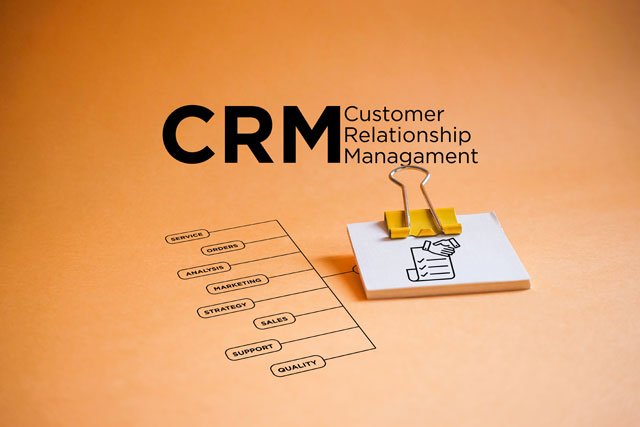Introduction
You should always review your work honestly, thoroughly, and without making allowances; that is the only real way to success.
You are not doing yourself or your client any favors by convincing yourselves that a proposal is great when it is just ordinary. Too many people do that. Learn to be constructively critical of your work at the review stage.
It is more than just important to allow yourself sufficient time to properly prepare your grant proposal. It is crucial!
This is even more important in the case of your very first grant application. Use this rule of thumb: Work out how long you think you need to give yourself to do the proposal, then double it..
You need to be aware of and allow for the great unknown involved in preparing a grant: the length of time the internal review is going to take.
Does the organization, your client, have a boss who is pedantic and a real stickler for control; i.e., he or she has a need to super-edit everyone's work? Allow additional time on top of the double time estimate.
You must have a structured timeline and one that leaves plenty of flexibility, especially if you are a "newbie." Here is an example:
Week 1: Get to know the specific project you will be working on; i.e., the ins and outs of it before you do anything at all. You will need at least a week to get the necessary information from others and absorb it. You do not need to learn everything about the project at this time; you will have plenty of time during the many rewrites to do that.
Make sure that you check within your client organization to see if anyone connected with the organization happens to know anyone connected with the prospective funder.
Weeks 5 – 7: Write the grant proposal, making sure you share it with any staff that will be involved and any other relevant people.
This is when you revise, revise and revise again.
Week 8: When you have done your final editing, put the whole thing aside for a day or two, or more if you have time. Then revisit it with a somewhat fresher mind.
Week 9: Mail the proposal well ahead of the deadline.
Week 10-plus: Keep your fingers and wait for your check.
Discovering a foundation or corporate grant-funder that offers a good chance of providing funding is akin to discovering a diamond, so treat that find with tremendous respect and discretion.
Discovering gems like this has nothing to do with luck. It is all about becoming a good investigator, a grant detective, you could say. You need to be willing to comb through minute details the way the old gold panners spent hours sifting through the sand to find gold specks that led to finding gold. Often you will find treasure that will stay with you past that first grant.
There is absolutely no need at all to be devious, underhanded, or ruthless in your grant search and submission. At the same time, though, you need to play the best game you can. For example:
Ñ Use the Internet to look for helpful Web sites of both foundations and corporations.
Ñ Subscribe to the electronic version of funding newsletters, such as the Philanthropy News Digest or the RFP Bulletin. You can sign up for free at www.fdncenter.org.
Ñ Be sure to get grant application guidelines; copies of annual reports, including financial information on previous grants funded; and any other literature that can help you adapt your grant application to the funder's current areas of interest.
Q Do not call the funding source with a dozen questions.
Q Do not write or submit a grant proposal without having completed extensive research first, no matter how much you think you know about the project.
Q Do not share your funding sources with friends or colleagues that work for other nonprofits.
Q Do not try to build on your strengths without admitting to your weaknesses and demonstrating to any funder how you will either compensate for those weaknesses or set in place a way of coping with any challenges that may arise due to those shortcomings.
Most, if not all, funders will be duly impressed by such proactive thinking.
Budgets: The Narrative Plus Dollars and Cents Add Up to Success
Introduction
Developing a budget section of a grant proposal or bid is not like going shopping on someone else's account. Thoughts of "Oh boy, I've got all this money to play with!" or "I can charge this against someone else's account!" should never enter your mind.
1. Some funders look at the budget figures before they review any other part of a grant proposal.
2. Some funders even make a preliminary decision based on the figures alone.
3. Providing there is an outline of good project activities, a solid budget gives credibility to the rest of the grant proposal.
For the reasons above and others, grant-seekers need to allow an abundance of time for developing the budget sections of their grant proposals. Remember that budget development should follow planning; it is always best done when the project goals and activities are clear.
Don't forget the budget narrative, which involves a brief discussion of how the expenses relate to the overall project, with particular reference to any major expenses.
Narratives are very important, particularly when dealing with budgets that extend for more than one year.
As always, you must pay close attention to the grant maker's guidelines. (You may be sick of reading these words, but they are so importantthat they bear continual repetition.)
Always bear in mind that there are different approaches to budgets, just as there are different approaches to grant projects, depending of course on the priorities, size, and type of the grantors involved.
The following may appear to be obvious, but some still do not account for it: If your budget needs to cover multiple years, show each year separately, ensuring also that you account for inflation. An additional document, or footnotes, can be used to provide justification by linking line items to project activities and formulas for each item included in the budget.
A grant maker may require a lot of detail, or just a little. Whatever funding organizations want and in whatever way they ask for it to be documented, do it that way.
Always double check any math, keeping records of how you arrived at all figures.
When giving your proposal a final read-through, do it with your budget right in front of you, so that you can be absolutely sure that the two are 100 percent consistent with each other. A good suggestion is to get someone else to do a read-through for you as well.
There are many resources covering the detail surrounding grant budgets. Many are free of charge, so we have taken care, rather than reinventing the wheel and therefore wasting your time, to place very important generalized information here that will not only directly assist you but certainly give you food for thought.
How much is that? Or, in other words, how much can you ask for?
First, federal proposals always list the total amount of money the department will have available for that particular project, plus the ceiling amounts that will be granted to each successful proposal within that project.
Foundations, on the other hand, give a range of different grant sizes, along with the typical size within that range. For example, "The range is $1,500 to $6,000; typical grant size is $2,000."
The funds given by individuals not operating through a foundation are really more like financial gifts, based on a formula something like this:
-- Who is asking?
-- How is that entity asking?
-- What exactly is the entity asking for?
When less is definitely better: Never exceed the highest amount quoted in the range of grant funds. As a matter of fact, it pays to actually ask for less. Also, as in a lot of other situations, it is also clever to ask for an unusual amount, say $181,567, if the cap is $200,000. This often works because an unrounded number makes it look more as if you are asking only for the funding necessary to actually do the project and not topping off as well.
Match requirements: Are there leverage funds required to qualify for a grant? This simply means that the grantee, or applicant, must in some way, through the operations budget or other donations, offer a particular amount in funds in order to qualify for the grant. Most often, matching is required upfront by federal and state grant agencies.
It is often linked to sustainability plans for a very good reason. Let us have a look: A request for proposal (RFP) may demand that in the first year, the grant applicant must provide a 20 percent match (i.e., $20 for every $100); in the second year, a 50 percent match; and in the third year, a 75 percent match. You easily can see the reason behind this is simply to encourage the grant applicant to begin planning right from the beginning for the time when the grant expires.
It also has the added benefit of discouraging those organizations who are much more interested in simply pursuing grant money than in commencing and continuing a service. Always read the fine print in any RFP with regard to matching requirements.
As you may know, many funders do not like to be the only ones contributing to a project. This might mean that you are not sure where allthe money is going to come from when you actually apply for a grant.
That is okay, no need to panic, but you will need to indicate the possible sources of other funds. Following is an example:
Requested from Amount
Requested from the
Bill & Melinda Gates Foundation $10,500
Virgin Airlines (in kind, agreed) 5,300
Marshall Family Foundation (received) 3,000
Brochure income 1,200
$20,000
=====


































